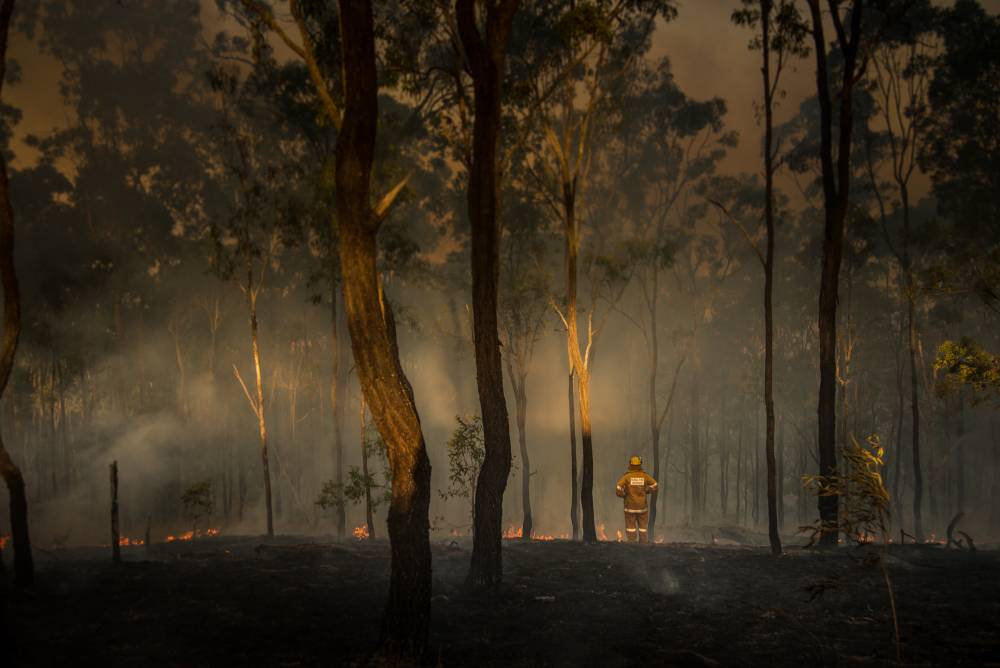
With no substantial rain forecast for weeks, the bushfire crisis looks set to continue well into the new year.
Far away from the front line, where I live in Sydney, we have become used to a pall of smoke hanging over the city, and raspy voices and sore eyes have become the norm.
Closer to the fires, the health impacts of course can be far more serious, and even fatal.
As well as catastrophic physical injuries from the fires, the psychological impacts can also be far reaching, and enduring. Grief and trauma are extremely common effects of experiencing fires.
This article will review the ways the fires can affect health, particularly the health of older people who are more likely to have pre-existing health conditions that could be exacerbated by fire and smoke.
Bushfire smoke is known to irritate the eyes, nose and throat. The small particles in bushfire smoke can penetrate deep into the lungs and can make existing heart and lung conditions worse.
When exposed to bushfire smoke, many people with experience temporary conditions, such as sore eyes, nose or throat, or a cough.
People with conditions like emphysema, angina and asthma may see their conditions worsen if exposed to bushfire smoke, even causing heart attacks or asthma attacks.
Older people are more likely to have heart or lung problems, so therefore may be more likely to suffer ill health effects from the fires.
If you are concerned about your health during the bushfires, you should see your GP.
Many people will experience grief, distress and disbelief in response to the bushfires. These responses can last for weeks after the event. In the hours and days immediately after a bushfire, people may be stunned and dazed.
Many survivors of the 2009 Kinglake fires, where 120 died, have struggled with post traumatic stress disorder, even a decade after the event. Of course, only time will tell the psychological fallout from the latest bushfire catastrophe.
For those who are on the front line, the experience can be extremely frightening and traumatic.
The RACGP recommends that doctors seeing anyone affected by the fires should assess them for psychological syndromes as well as physical effects.
Psychological conditions that can occur after a disaster or trauma, such as bushfires, include:
The NSW Government’s Bushfire health guidance recommends older people should reduce their exposure to bushfire smoke by remaining indoors on days of poor air quality.
Indoor venues with air-conditioning are ideal, such as shopping centres, cinemas, or libraries.
Household air conditioners do not filter out the fine particles present in bushfire smoke, but commercial air conditioners filter out fine particles to a greater degree.
Older people should also avoid vigorous outdoor exercise on poor air quality days.
Many people have turned to face masks to protect them from the smoke. However, surgical or cloth facemasks do not protect you from inhaling the fine particles in bushfire smoke.
The only masks that can help to filter out the fine particles are P2/N95 rated face masks. However, they must fit properly, with a tight seal around the face. Proper fits can be difficult to maintain, and can therefore give wearers a false sense of security they are being protected from inhaling smoke.
The Royal Australian College of General Practitioners, which has released special guidance for doctors to help them deal with the bushfire crisis, says P2 masks should not be relied upon.
When a burn occurs, the initial treatment is always the same: remove clothing or jewellery near the affected area, and place the burn under cool running water for at least 20 minutes.
You should seek medical attention for burns that are:
Do not use ice or iced water on burns.
Keep the person warm.
There are special emergency arrangements in place for the supply of medications to those who have been affected by the bushfires.
If you have lost medications, prescriptions or a Medicare, DVA or Centrelink card and you are in a bushfire affected area, you can call your GP and ask them to send a prescription to a pharmacist wherever you are.
But if you can’t contact your GP you can go to a local pharmacy to get a three-day emergency supply of the medication. You will be charged the usual amount of the prescription for most medicines.
These emergency arrangements will be in place in New South Wales until 31 March 2020.
If you have medications that require refrigeration, such as insulin, thyroxine tablets or immune therapies, and refrigeration may have been compromised, the medicines should be discarded.
If the medicine is essential to sustaining your health, it should continue to be used until a new supply is available.
Anyone who is concerned about their physical or mental health after a bushfire should see their GP.